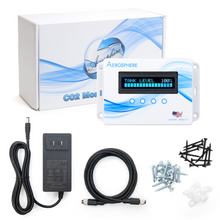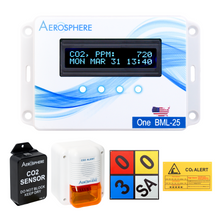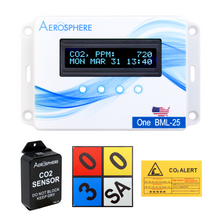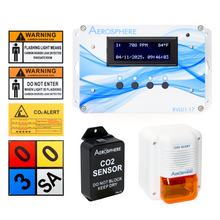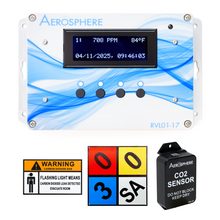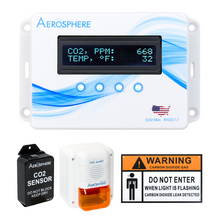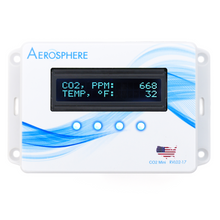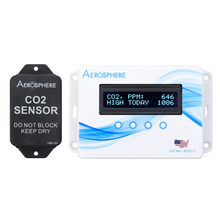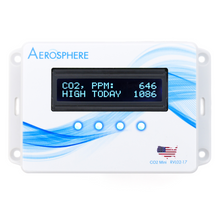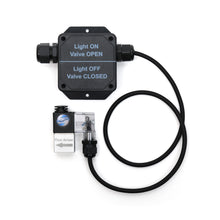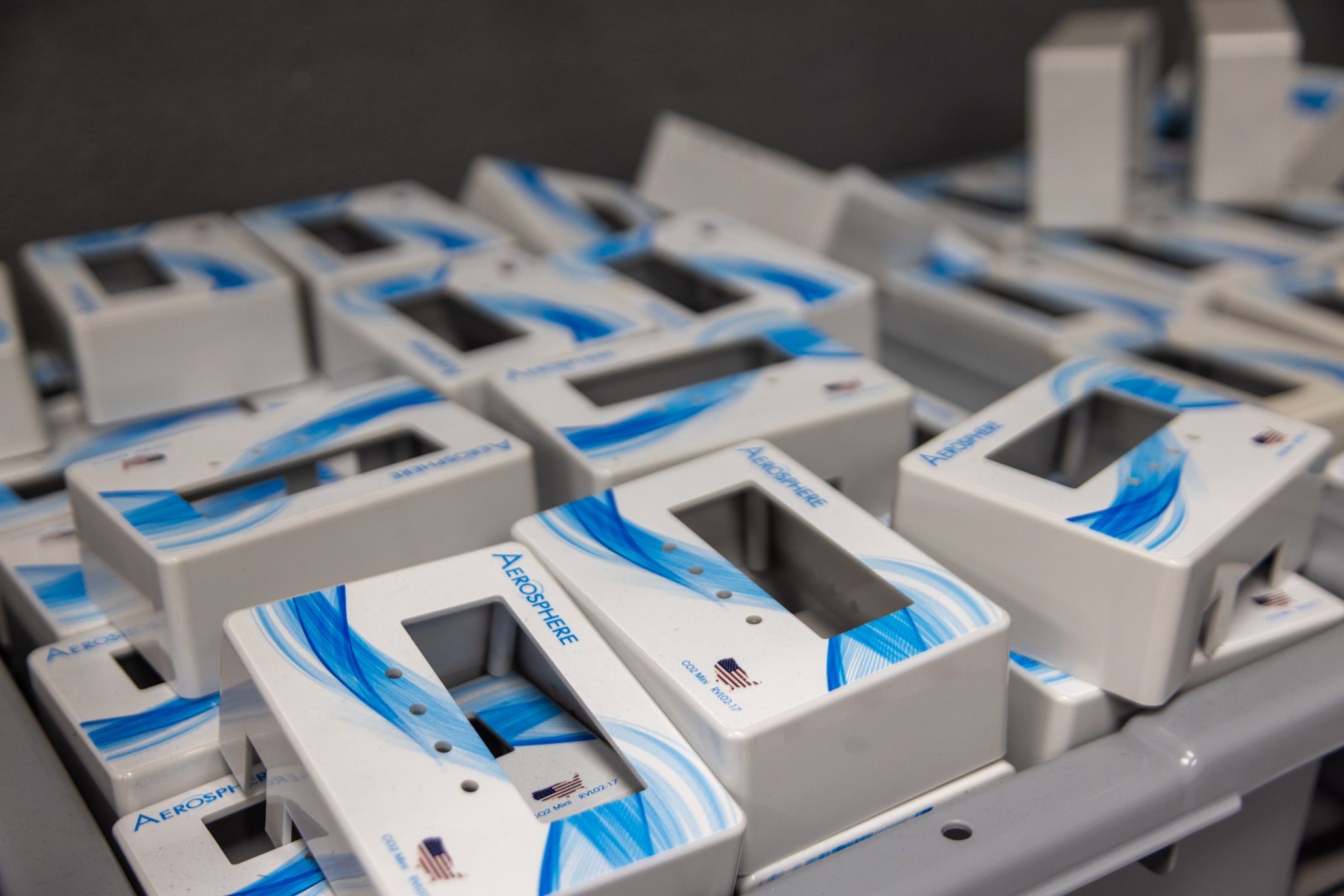Understanding CO2: Key Applications and Safety Concerns Across Sectors
Explore the essential uses of CO2 in industries like food, beverage, schools, and growhouses, and the importance of reliable monitoring systems for safety and efficiency.
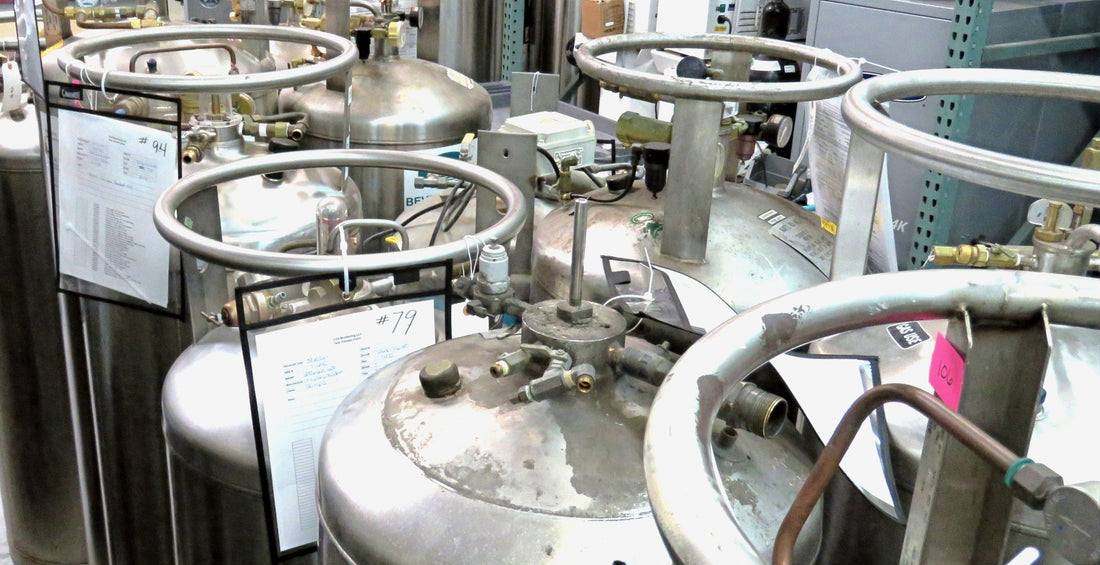
Carbon dioxide (CO2) is an essential gas in numerous industries, playing a critical role in everything from food and beverage production to indoor air quality management in schools. While CO2 is commonly used for processes like freezing food, carbonating beverages, and enhancing plant growth in greenhouses, its presence can pose significant safety risks if not properly monitored.
Understanding CO2's applications, along with the potential dangers of high exposure, is crucial for ensuring the well-being of workers and maintaining regulatory compliance. This article explores CO2's widespread uses, the safety concerns associated with its exposure, and the importance of reliable monitoring systems in mitigating health risks across different sectors:
Food and Beverage
Cryogenic cooling and freezing with carbon dioxide are responsible for processing frozen foods and keeping them cold in refrigerated areas, such as walk-in coolers and beer coolers. Other cooling methods include using dry ice, which is carbon dioxide in its solid state. This solidified gas sublimates (or directly turns into gas) at a chilly -78.5 °C (-109.3°F) per the Water Science School. The beverage industry relies heavily on the gas to provide that bubbly experience we all know as carbonization. The American Chemical Society explains it well here: ”The molecules of carbon dioxide are thoroughly mixed and dissolved into the water in the soda pop. When you open a soda can or bottle, the carbon dioxide will begin to come out of the soda and into the air”.
Because of these applications for CO2 usage in the food and beverage industries, your chance of being exposed to high, alarming levels of carbon dioxide rises. Here are some statistics pulled from this 2023 study titled “¡AGUÁNTATE! - HEAT, HAZARDS AND INDIFFERENCE TO SAFETY IN CALIFORNIA’S FAST FOOD RESTAURANTS", researching fast food workplace safety:
“Common forms of toxic exposure faced by fast food workers include... natural gas leaks from equipment including grills, broilers and steamers; and CO2 gas leaks from tanks connected to soda machines... Of those who have experienced toxic exposure on the job, 85 percent report that they have experienced symptoms such as headache, stinging eyes, dizziness, or infection from the exposure. Eighty-eight percent say that they have not been trained on what to do in the event of a toxic exposure at work” .

Later in the article, it describes a specific risky situation with a CO2 monitoring system detecting a leak:
“One day in April 2023, workers at a McDonald’s in East Los Angeles noticed a musty smell in the back area of the store, where the CO2 tanks are kept. Not long after, an alarm went off for about an hour. Alexis Paulino, who was working at the time, says: 'I asked the manager what was going on, and she said, "Don’t worry about it." I went to the back to see what was going on, and I saw the CO2 detector screen said, "Caution, evacuate immediately." I saw that the monitor showed 3 percent, and later 2 percent. It took a long time to go down to 1'”.
On top of this being a dangerous interaction with CO2, this is an excellent example of a failure in management and their training. Considering the transient nature of the food and beverage industry, employee turnover creates a need for consistent, reliable training—particularly on the topic of safety with CO2 toxicity and its monitoring systems. The compliance and continued education of your CO2 monitoring system should be part of new hire safety training.
Schools
With the COVID pandemic, we’ve learned the importance of air ventilation when it comes to risks of airborne illnesses, which includes the common flu and cold that surge throughout the year. Understanding CO2 concentration is essential here to detect when there’s a potential build-up in the natural byproduct, meaning a lack of ventilation and therefore, a higher concentration of viruses and other airborne illnesses that may circulate a room.
Sowoon Park and Doosom Song in their 2022 study, “CO2 concentration as an indicator of indoor ventilation performance to control airborne transmission of SARS-CoV-2” reviews this in-depth. Their proposed method of determination (with CO2 concentration to control the COVID airborne transmission based on the calculation of the rebreathed fraction) was used in environmental case studies in classrooms and restaurants. The duo was able to prescribe certain thresholds to be under in order to control the risk of SARS-CoV-2 airborne transmission. They conclude that “this methodology can be helpful for controlling the indoor air exchange in order to reduce the risk of airborne COVID-19 transmission in real-time by monitoring only CO2 concentration without calculating ventilation performance.”
Fun fact: Through the School Reopening Ventilation and Energy Efficiency Verification and Repair Program from the California Assembly Bill 841, the state requires its participating schools and classrooms to ensure proper air ventilation through the usage of a carbon dioxide monitor. This legislation is even spreading to other states, like the Nevada Assembly Bill 257.
Grow houses and nurseries
Carbon dioxide is part of the important process called photosynthesis. As the “Greenhouse Carbon Dioxide Supplementation" study by Poudel and Dunn states: “photosynthesis is the process which involves a chemical reaction between water and carbon dioxide in the presence of light, to make food (sugars) for plants and as a byproduct releases oxygen in the atmosphere”.
For crop management and fertilizer optimization in growhouses, CO2 monitoring can ensure that your plants are receiving the optimal levels of the gas while in development. Knowing how to manage these levels can lead to efficient growing times and productivity. Too much of the gas can be fatal to your plants, your employees, and your business. In this article, “A Survey of Modern Greenhouse Technologies and Practices for Commercial Cannabis Cultivation” from the Institute of Electrical and Electronic Engineers (IEEE), CO2 is noted as a key determinant of faster development and higher yields. During their study, CO2 levels were being monitored to keep an eye on the environmental and supplemental CO2. This is to ensure that plant growth was fueled through cellular respiration. Roger shows how certain PPM levels engage optimal growth rates:

More applications
Other industrial cases and uses include:
- Emergency devices in fire suppression: CO2 flooding systems are used to extinguish fires in engine rooms, boiler rooms, pump rooms, and holds by displacing O2 in the air. Knowing when it’s safe to re-enter these rooms can only be done with the right CO2 monitoring system.
- Metalworking: CO2 is used to harden casting molds and has anti-corrosive properties. CO2 is used during the canning process. Canning facilities take units of aluminum, which are then placed into a mold and pumped and sealed with CO2 to keep it sterile, while keeping the corrosive O2 out. This is known as CO2 purging.
- Welding: CO2 is used in combination with argon to improve welding rates and reduce the need for post-welding treatment.

